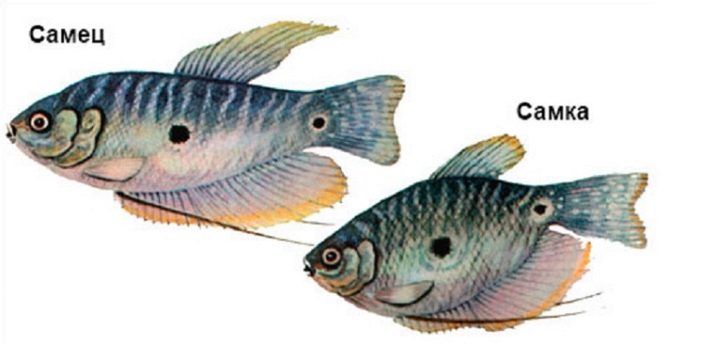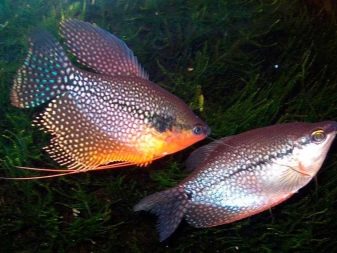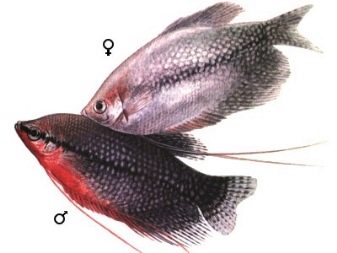How to tell a female gourami from a male?

Novice lovers of aquarium fish always pay attention to cute gourami, who attract not only with their beauty, but also with their calm, peaceful disposition. Having seriously thought about breeding such fish, many people have a question, how can you distinguish gourami by gender. But in fact, it turns out that it is quite easy to determine the sex of a fish. Now let's talk about everything in more detail.


External differences
The question, a boy in front of you or a girl, becomes especially relevant at the moment when the breeding season of these cute creatures begins. While the fish are still small, it can be very difficult to distinguish the female from the male. But already at the age of 6-7 months, the gourami show clear signs of gender difference.
There are several ways to distinguish a female from a male. Let's start with the external differences. Take a close look at your pet. If he has a long dorsal fin that reaches almost to the very tail, then this indicates that there is a male in front of you. In addition, in boys, this fin has a more pointed shape. In girls, the dorsal fin is much shorter and has an even rounded shape.
And you can also distinguish them by the anal fin. If the anal fin of the fish is round in shape and small in size, then this indicates that in front of you is a girl. In males, it is slightly longer and its tip also has a pointed shape, as is the case with the dorsal fin.
You can also tell the male from the female by size. Boys are many times larger than females. But it should be noted that they can be distinguished by their size only after the pets are at least 6 months old.

Color
Next, you should pay attention to the color of the fish.As a rule, the characteristic color appears in gourami just before spawning. Pay attention to the color of your fish's belly. In males, it turns bright scarlet or orange. This applies to those fish that initially have a bright color.
If you have a pet of a pearl shade in front of you, then a barely noticeable red stripe appears on the abdomen during this period. In males of a different color, for example, in the "honey", either a red stripe appears, or the abdomen becomes a darker shade. In spotted males, small specks on the fins become more saturated and brighter in color, and the body is slightly darker than usual. The stripes become almost black.
It should be noted that by color, it is possible to distinguish a female from a male not only during the breeding season.
All male fish have a brighter and more intense color than that of girls.


Other differences
During the period of their active growth, females gain weight much faster. As a result, the body of the female becomes denser and fuller. Males, while growing up, remain more "slender".
In the event that you still doubt whether a male or a female is in front of you, then you can find other differences between them. For example, they are also different in nature. If you carefully observe the behavior of your aquarium fish, then soon it will be possible to understand that gourami also differ in character. Males are much more active and mobile.
Gourami boys can show true masculine character if you closely observe their behavior. And although they are peaceful and friendly fish, when an opponent approaches, they begin to behave very aggressively and actively defend their territory. That is why experts recommend purchasing a large aquarium to provide them with more comfortable conditions. If several males live in a small aquarium, they will constantly fight for territory.

Before spawning, not only the color changes, but also the behavior of the fish. EIf you notice that your pets have started chasing each other in the aquarium, then pay attention to who exactly is trying to catch up. Usually, it is males who chase females, thereby attracting their attention.
It should be noted that at the same time the boys do not show any aggression towards the females at all. During this "race", males often find themselves in the upper layer of water and actively release bubbles.
If such a "race" does not take place during the spawning period, then, most likely, it is the males chasing each other. Usually, this behavior suggests that they cannot divide the territory.
How to determine the gender of a gourami is described in the next video.








